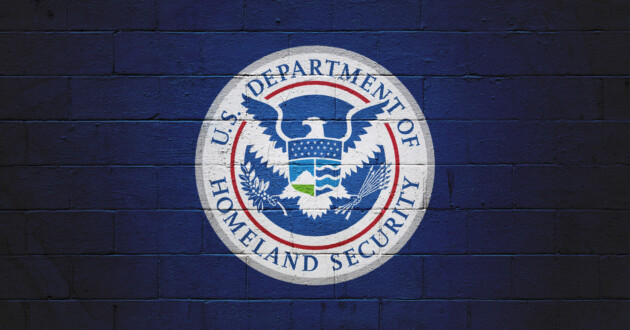What will a TikTok ban mean for U.S. cybersecurity?


President Joe Biden signed a bill on April 24, 2024, giving Byte Dance, the Chinese parent company of TikTok, two options: sell TikTok within nine months or face a ban on the app in the United States.
The bill comes after years of concerns that the app increases cybersecurity risk. In March 2024, the House passed a bill banning TikTok, but it was not passed by the Senate. However, in April, Speaker Mike Johnson included the House TikTok bill into a $95 billion foreign aid supplemental plan.
DoD details TikTok cybersecurity concerns
An April 2024 release from the Department of Defense details the federal government’s reasons for putting a ban into action. John F. Plumb, the Assistant Secretary of Defense for Space Policy and Principal Cyber Advisor to the Secretary of Defense, describes TikTok as a potential threat vector to the United States. Unlike American-based social media platforms, the Chinese government states that they will touch data from the platform at any time. According to Plumb, China has used its cyber capabilities to steal sensitive information, intellectual property and research from U.S. public- and private-sector institutions, including the defense industrial base, for decades.
“Chinese cyber intrusions are the most prolific in the world. In crisis, PRC [China’s] leaders believe that achieving information dominance will enable them to seize and keep the strategic initiative, disrupt our ability to mobilize, to project and sustain the joint force and to ensure the PRC’s desired end state,” Plumb said.
Additionally, the concern has increased due to the large number of people using the application. Every day, 150 million users access the app, which equates to one-third of adults and one-sixth of kids. In addition to entertainment and funny videos, many people use TikTok for news and product endorsements, which means the app has a wide influence on users. Army General Paul M. Nakasone, Commander of U.S. Cyber Command, Director of the National Security Agency and Chief of the Central Security Service, said the wide usage provides a foreign nation with a platform for information operations and surveillance and raises concerns in regards to who controls that data.
Review threat detection & response solutions
What happens next with the bill
The bill faces significant challenges, including legal challenges, anti-trust hurdles and public backlash. According to experts, the ban could take years to go into effect if it does. Additionally, questions remain about the FTC’s ability to be involved in the approval of a sale of the company.
Shou Zi Chew, TikTok’s CEO, stated that the company would begin legal challenges to the bill. In a TikTok post, Chew said, “Make no mistake, this is a ban, a ban on TikTok and a ban on you and your voice… We are confident, and we will keep fighting for your rights in the courts. The facts and the Constitution are on our side, and we expect to prevail.” He went on to tell users to share stories about how TikTok impacts their lives to showcase exactly what they are fighting for.
As the bill is written, it will not be illegal for U.S. citizens to have the TikTok app on their phones or to use the social media platform in the country. However, people will no longer be able to download the app from the United States. According to Time, users will still be able to use the app but will not be able to update the app with new versions, security patches and bug fixes, which means that the app will eventually not be usable or secure. While it may be possible to perform these functions over a Virtual Private Network, there are questions about this workaround.
Although a bill has been signed, it will not take effect for at least nine months from now. United States users can still download the app in the country without issue. However, TikTok users should continue to monitor the progress and news regarding the bill.
More from News


June 3, 2024
Version 2 of the National Cybersecurity Strategy and Implementation Plan has been released
3 min read – In March 2023, the U.S. administration released the first National Cybersecurity Strategy Implementation Plan (NCSIP). This was presented as a government action plan consisting of 27 strategic objectives prioritizing critical initiatives to protect national security from ongoing cyber threats.Recently, 31 initiatives have been added to this plan, and a number of federal agencies have been identified to lead these efforts moving forward.Goals of the National Cybersecurity Strategy Implementation PlanThe NCSIP outlines several critical implementation actions to improve the U.S. national…


May 31, 2024
How has Executive Order 14028 affected federal cybersecurity so far?
3 min read – Recently, the United States Government Accountability Office issued an update on the progress of Executive Order 14028, Improving the Nation’s Cybersecurity. In 2021, the White House identified 55 leadership and oversight requirements that needed to be met to improve cybersecurity in federal IT systems, with all systems needing to meet or exceed the standard outlined. Executive Order (14028) on Improving the Nation’s Cybersecurity elaborated on the reasons for the requirement, stating that the “prevention, detection, assessment and remediation of cyber…


May 30, 2024
Inside the DHS’s AI security guidelines for critical infrastructure
3 min read – Last year, Executive Order 14110 (Safe, Secure, and Trustworthy Development and Use of Artificial Intelligence) stated that “Artificial intelligence (AI) holds extraordinary potential for both promise and peril.” In response to this reality, the United States Department of Homeland Security (DHS) recently released guidelines to help critical infrastructure owners and operators develop AI security and safety. The DHS guidelines stem from insights gained from CISA’s cross-sector analysis of AI risk assessments completed by Sector Risk Management Agencies (SRMAs) and relevant…
Topic updates
Get email updates and stay ahead of the latest threats to the security landscape, thought leadership and research.
Subscribe today
This post was originally published on 3rd party site mentioned in the title of this site




